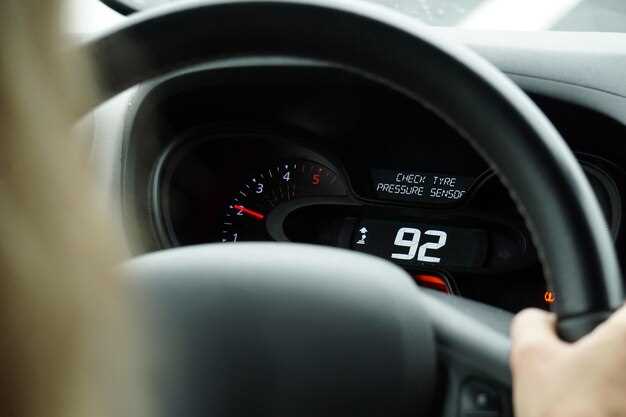Braking and acceleration during a test drive


Understanding the dynamics of vehicle performance is essential for both manufacturers and consumers. Among the critical aspects of this performance are braking and acceleration, which directly influence safety and drivability. The way a vehicle responds during these phases not only impacts the overall driving experience but also ensures that the driver maintains optimal control in various conditions.
When evaluating braking performance, various factors come into play, including the responsiveness of the braking system, tire traction, and weight distribution. A vehicle’s ability to decelerate effectively can mean the difference between avoiding an accident and facing a dangerous situation. Testing these parameters helps assess not only the performance under ideal conditions but also how the vehicle behaves in less-than-optimal scenarios.
Similarly, acceleration performance is vital for understanding how quickly a vehicle can respond to driver inputs. The response time during acceleration can affect merging into traffic, overtaking slower vehicles, and overall confidence behind the wheel. Comprehensive testing protocols are necessary to evaluate a vehicle’s acceleration across different terrains and load conditions, ensuring that drivers can rely on their vehicles for peak performance.
In conclusion, rigorous testing of both braking and acceleration performance provides valuable insights into vehicle dynamics. Manufacturers must prioritize these tests to enhance safety and performance, while consumers should consider these factors when choosing their next vehicle.
Measuring Stopping Distances Under Varying Conditions

Stopping distance is a critical factor in assessing a car’s braking performance. It is influenced by several variables including road surface, weather conditions, and vehicle speed. Accurately measuring stopping distances under different conditions provides valuable insights into a vehicle’s response capabilities.
One of the primary factors affecting stopping distance is the coefficient of friction between the tires and the road. In dry conditions, a car can achieve shorter stopping distances due to higher friction levels. Conversely, wet or icy surfaces significantly reduce this coefficient, leading to longer stopping distances. Testing in varied weather conditions is essential to understand how these elements affect braking efficiency.
Another vital aspect involves the car’s initial speed. Higher speeds increase the distance required to stop, as illustrated by the physics principle that stopping distance is proportional to the square of the speed. Therefore, comprehensive testing at different velocities helps quantify the impact of speed on braking performance.
The car’s load and tire specifications also play critical roles in determining stopping distances. Heavier vehicles typically require more distance to come to a complete stop, while the type and condition of tires influence traction. Employing standardized tests with consistent tire conditions allows for accurate comparisons across different vehicles.
Moreover, driver response time is an essential component of stopping distance. Factors such as the driver’s awareness and ability to react quickly can dramatically affect the outcomes of braking tests. Including human factors in testing scenarios ensures a more realistic assessment of performance under real-world conditions.
In conclusion, measuring stopping distances requires a comprehensive approach that takes into account various conditions. By systematically evaluating the influences of friction, speed, load, and driver response, manufacturers can enhance vehicle safety and performance through informed design and engineering decisions.
Assessing Driver Feedback During Acceleration Tests
In the realm of automotive testing, understanding driver feedback is crucial for evaluating a vehicle’s acceleration performance. During acceleration tests, drivers provide valuable insights into their experiences related to vehicle response and control. The subjective elements of their feedback can help optimize vehicle dynamics and enhance overall performance.
Driver response encompasses various factors, including perceived power delivery, throttle sensitivity, and overall handling characteristics. When drivers accelerate, their feedback often highlights how quickly and smoothly the vehicle responds to input. A responsive vehicle instills confidence, allowing the driver to seamlessly transition from acceleration to subsequent maneuvers.
Furthermore, the control aspect of acceleration significantly influences driver feedback. Effective control allows drivers to maintain composure during rapid changes in speed. They often report their comfort levels with the vehicle’s handling dynamics, indicating whether the car feels stable and predictable under acceleration. Instances of excessive torque steer or loss of traction may adversely affect driver perception, potentially leading to dissatisfaction.
Collecting driver feedback during these tests can be accomplished through surveys, interviews, or direct observation. The information gathered is invaluable for engineers seeking to refine vehicle design and improve performance metrics. Understanding how drivers interact with acceleration can guide crucial decisions in tuning suspension, steering response, and engine mapping.
In conclusion, assessing driver feedback during acceleration tests provides essential data regarding vehicle performance. It encapsulates the driver’s perceptions of response and control, offering insights that can shape future automotive innovations and enhance the driving experience.
Evaluating Vehicle Stability During Emergency Maneuvers

Vehicle stability is paramount during emergency maneuvers, where rapid changes in speed and direction can significantly challenge a car’s handling capabilities. Understanding how a car responds to sudden steering inputs or abrupt braking is crucial for both driver safety and vehicle design.
When evaluating stability, it’s important to assess dynamic response characteristics. This involves analyzing how the vehicle behaves under various conditions, including different road surfaces, weather conditions, and load distributions. The suspension system, tire grip, and overall weight distribution play critical roles in maintaining control during these high-stress scenarios.
Emergency maneuvers typically include sharp turns, evasive actions, and rapid stops. During such moments, a vehicle must manage lateral and longitudinal forces effectively. Testing should focus on oversteer and understeer tendencies, which can indicate how well a car maintains traction while deviating from its intended path. The balance between stability and agility is essential; a vehicle that is too rigid may not respond effectively, while one that is too loose can become uncontrollable.
Utilizing both simulation and real-world testing, engineers can gather data on a vehicle’s response to emergency scenarios. This includes assessing the effectiveness of electronic stability control systems and antilock braking systems, which can help maintain vehicle control during critical situations.
In conclusion, evaluating vehicle stability during emergency maneuvers requires a comprehensive approach, examining how a car behaves under stress. Maintaining stability is not only about vehicle design but also involves understanding driver interaction with stability technologies. Continuous testing and refinement can lead to safer vehicles capable of delivering reliable performance when it matters most.



